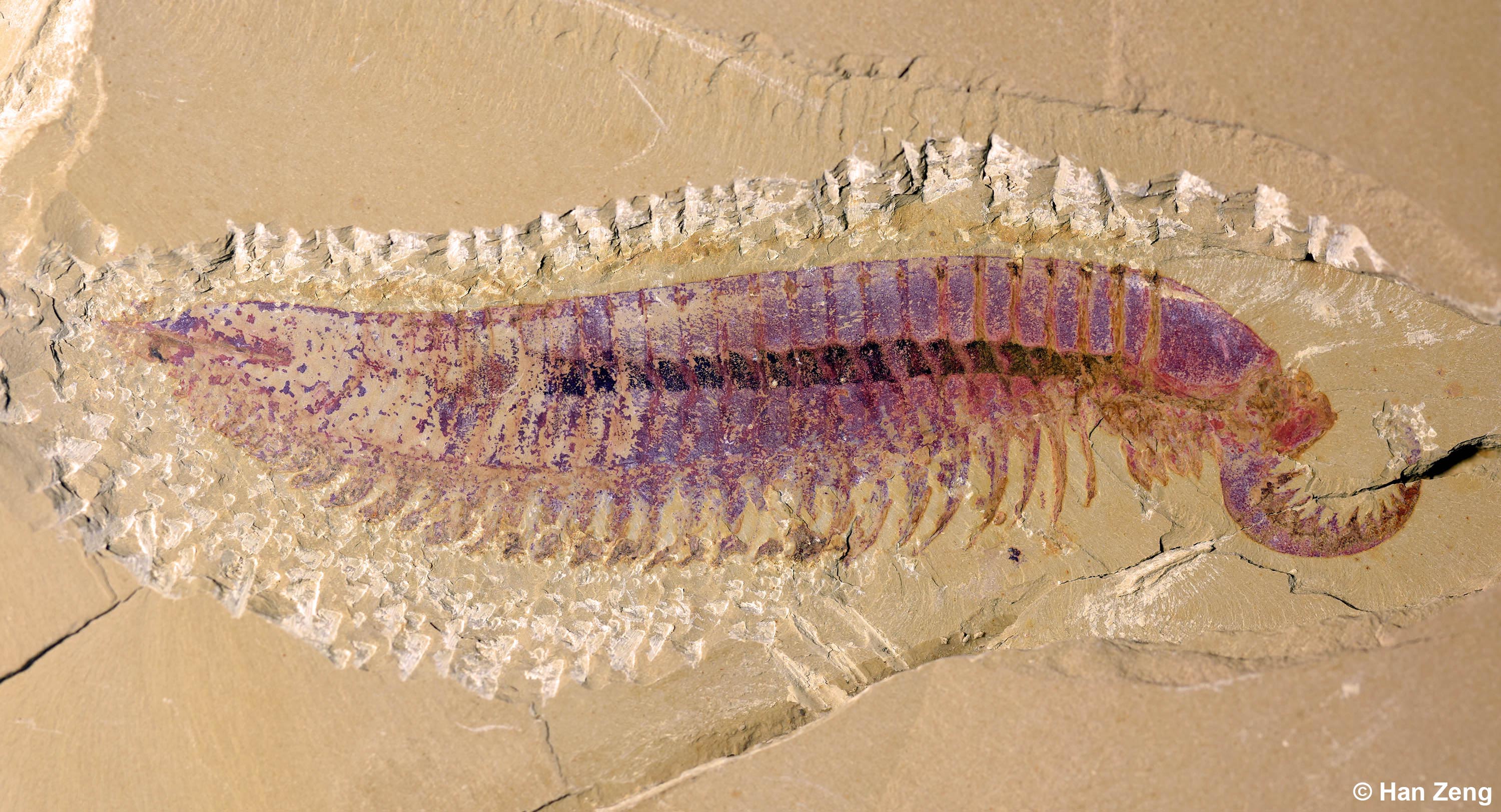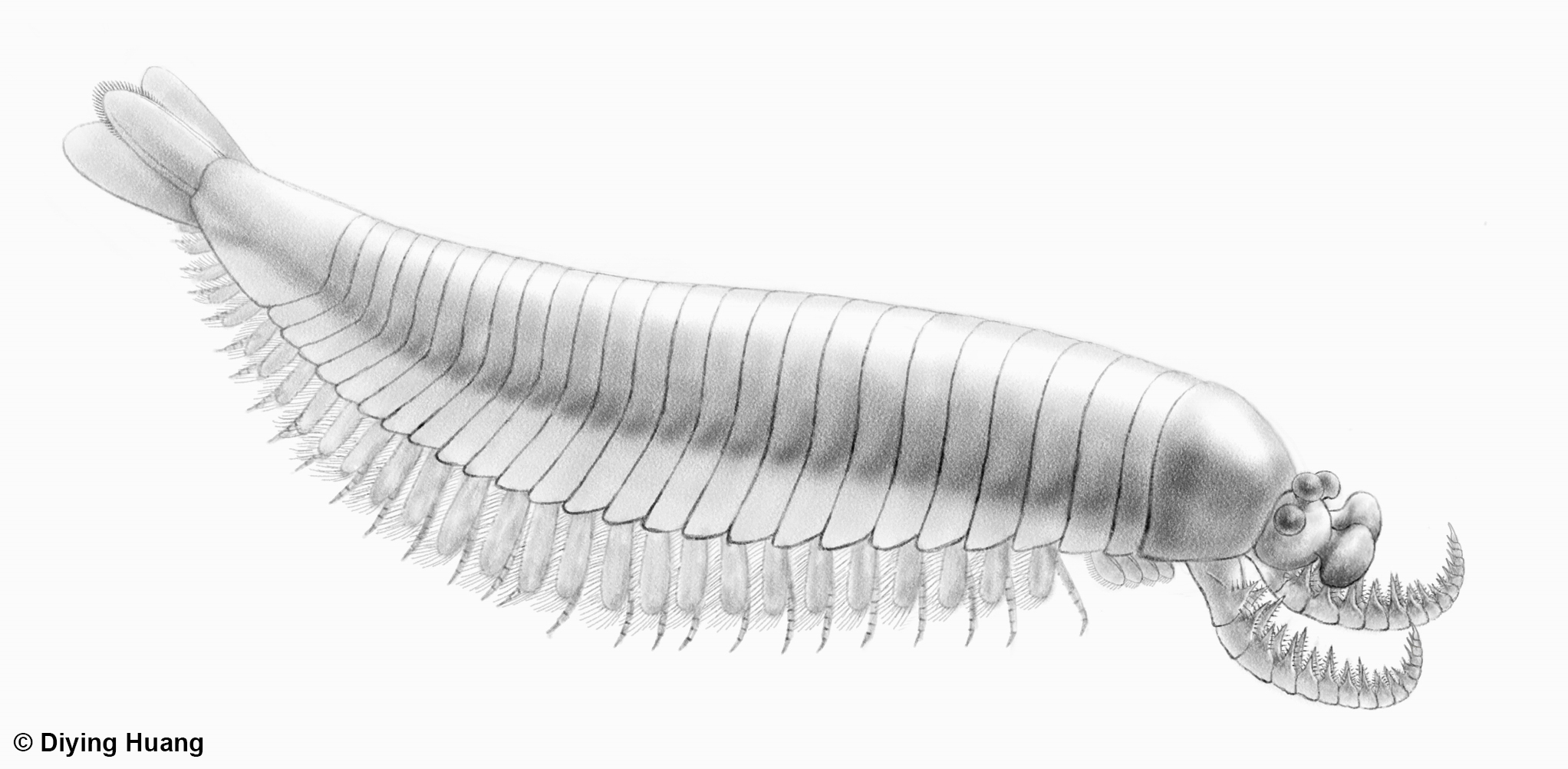Kylinxia: A 520-million-year-old chimeric fossil uncovering the origin of arthropods
The discovery of a shrimp-like fossil named Kylinxia provides important insights into the early evolutionary history of arthropods, finds new study led by paleontologists from the Nanjing Institute of Geology and Palaeontology, Chinese Academy of Sciences (NIGPAS).
Butterflies, crabs, centipedes, and spiders -- these animals are all arthropods. Arthropods have been among the most successful animals on the Earth since the Cambrian Period (roughly 520 million years ago), and they constitute nearly 80 percent of all animal species today.
However, how did arthropods come from and what did their ancestors look like? This has been a major conundrum in animal evolution that puzzled generations of scientists for more than a century.
This study, published online in Nature by scientists from China on November 4, 2020, discovered a shrimp-like chimeric fossil species that helps resolve the conundrum on the origin of arthropods. The fossil species, Kylinxia, was collected from the Chengjiang fauna in Yunnan, southwest China, a UNESCO Natural World Heritage that documents early animal fossils with soft-tissue preservation in the Cambrian time.
Professor Diying Huang, study corresponding author at NIGPAS, said: “Kylinxia is a very rare chimeric species. It combines morphological features from different animals, which is analogous to ‘kylin’, a chimeric creature in traditional Chinese mythology.”
Study co-corresponding author Professor Fangchen Zhao, also from NIGPAS, added: “Owing to very special taphonomic conditions, the Kylinxia specimens exhibit exquisite anatomical structures. For example, nervous tissue, eyes and digestive system -- these are soft body parts we usually cannot see in conventional fossils.”
“Kylinxia has a body showing distinctive features of true arthropods, such as a hardened cuticle, a segmented trunk and jointed legs. However, Kylinxia also integrates the morphological characters present in very ancestral forms, which include the bizarre five eyes as in Opabinia, known as the Cambrian ‘weird wonder’, as well as the iconic raptorial appendages as in Anomalocaris, the apex giant predator in the Cambrian seas.”, said study first author Dr. Han Zeng.
“Among the Chengjiang fauna, Anomalocaris is a top predator that can reach two meters in body length, and it has been regarded as an ancestral form of arthropods. But Anomalocaris and true arthropods have huge differences in morphology. There exists a great evolutionary gap between the two that can hardly be bridged.”, added study co-author Professor Maoyan Zhu.
“This gap has become a crucial ‘missing link’ in the origin of arthropods.”
With the aid of multiple techniques, the research team conduct detailed anatomical examinations on the fossils of Kylinxia. From an evolutionary developmental perspective, they demonstrate that the first appendages in Anomalocaris and true arthropods are homologous. Their phylogenetic analyses suggest that there is affinity between the front appendages of Kylinxia, small predatory appendages in front of the mouth of Chelicerata (a group that includes spiders and scorpions) and the antennae of Mandibulata (a subdivision of arthropods including insects such as ants and bees).
Diying Huang said: “Our results indicate that the evolutionary placement of Kylinxia is right between Anomalocaris and the true arthropods. Therefore, our finding reached the evolutionary root of the true arthropods”.
“Kylinxia represents a crucial transitional fossil predicted by Darwin’s evolutionary theory. It bridges the evolutionary gap from Anomalocaris to true arthropods and forms a key ‘missing link’ in the origin of arthropods, contributing a strong fossil evidence for the evolutionary theory of life.” Han Zeng added.
The research was funded by the Chinese Academy of Sciences (CAS) and the National Natural Science Foundation of China (NSFC).
Paper:
Han Zeng, Fangchen Zhao, Kecheng Niu, Maoyan Zhu, and Diying Huang. 2020. An early Cambrian euarthropod with radiodont-like raptorial appendages. Nature 588: 101-105. https://doi.org/10.1038/s41586-020-2883-7.
Images:
Image 1

Caption: Fossil specimen of Kylinxia, holotype.
Credit: Han Zeng, Nanjing Institute of Geology and Palaeontology, CAS
Image 2

Caption: Fossil specimen of Kylinxia, paratype.
Credit: Han Zeng, Nanjing Institute of Geology and Palaeontology, CAS
Image 3

Caption: Anatomical reconstruction of Kylinxia
Credit: Diying Huang, Nanjing Institute of Geology and Palaeontology, CAS
Image 4
Caption: Ecological reconstruction of Kylinxia
Credit: Diying Huang, Nanjing Institute of Geology and Palaeontology, CAS